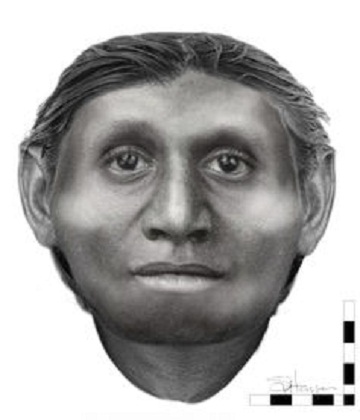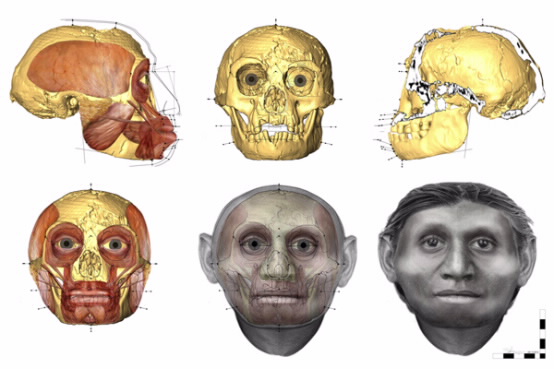Real-Life 'Hobbit' Face Revealed

Researchers have revealed what the face of a controversial ancient human nicknamed "the Hobbit" might have looked like.
"She's not what you'd call pretty, but she is definitely distinctive," said anthropologist Susan Hayes, a senior research fellow at University of Wollongong, New South Wales, Australia. The female doesn't have feminine-looking big eyes and she's lacking much of a forehead.
With a background in forensic science, Hayes was able to flesh out the face of the 3-foot (1-meter) tall, 30-year-old female based on remains that were uncovered in the Liang Bua cave on the remote Indonesian island of Flores in 2003. To come up with this facial depiction, Hayes uploaded information from 3D imaging scans of the skull into a computer graphic program and also looked at portraits by paleo-artists of the Hobbit, finding these earlier interpretations were skewed toward monkey features; her examination, meanwhile, suggested modern features were more accurate, according to the Sydney Morning Herald.
The 18,000-year-old skeleton, officially known as Homo floresiensis, gets its nickname from its squat stature. The Hobbit would have weighed between 66 and 77 pounds (30 and 35 kilograms). Since the discovery, scientists have debated whether the specimen actually represents an extinct species in the human family tree, perhaps a diminutive offshoot of Homo erectus, a 1.8-million-year-old hominid and the first to have body proportions comparable to those of modern Homo sapiens. [See Images of Homo Floresiensis]
Critics have argued that the remains could have belonged to a human with microcephalia, a condition characterized by a small head, short stature and some mental retardation. But a 2007 study — which revealed that the Hobbit's brain was about one-third the size of a modern adult human's brain — found that its brain region ratios were inconsistent with those characteristic of microcephalia. "In our view we dispensed at that point with the microcelpahy hypothesis," said Florida State University anthropologist Dean Falk, in 2009 when a skeleton cast of H. floresiensis went on public display for the first time at Stony Brook University on Long Island. "It's not just that their brains are small; they're differently shaped. It's its own species."
Also in 2007, work by Matthew Tocheri, an anthropologist at the National Museum of Natural History in Washington, D.C., and colleagues found the female Hobbit's wrist bones matched, in shape and orientation, those of non-human apes; they looked much different from the wrist bones of Neanderthals (Homo neanderthalensis) and modern humans, also pointing to a new species.
The Hobbit face was unveiled at the Australian Archaeological Conference being held from Dec. 9-13 at the University of Wollongong.
Get the world’s most fascinating discoveries delivered straight to your inbox.
Hayes, who prefers the term "facial approximation" to "facial reconstruction" for her work, said she was pleased with results.
"She's taken me a bit longer than I'd anticipated, has caused more than a few headaches along the way, but I'm pleased with both the methodological development and the final results," the researcher said in a statement.
Her work has yet to be published in a peer-reviewed scientific journal.
Follow LiveScience on Twitter @livescience. We're also on Facebook & Google+.




